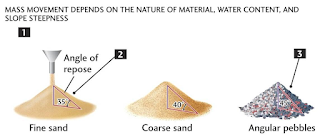4. Preparing the research design:
The
research problem having been formulated in clear cut terms, the researcher will
be required to prepare a research design, i.e., he will have to state the
conceptual structure within which research would be conducted. The preparation
of such a design facilitates research to be as efficient as possible yielding
maximal information.
In
other words, the function of research design is to provide for the collection
of relevant evidence with minimal expenditure of effort, time and money. But
how all these can be achieved depends mainly on the research purpose.
Research
purposes may be grouped into four categories, viz., (i) Exploration, (ii)
Description, (iii) Diagnosis, and (iv) Experimentation.
A
flexible research design which provides opportunity for considering many
different aspects of a problem is considered appropriate if the purpose of the
research study is that of exploration. But when the purpose happens to be an
accurate description of a situation or of an association between variables, the suitable design will be one that minimizes bias and
maximizes the reliability of the data collected and analyzed.
There
are several research designs, such as, experimental and non-experimental
hypothesis testing. Experimental designs can be either informal designs (such
as before-and-after without control, after-only with control, before-and-after
with control) or formal designs (such as completely randomized design,
randomized block design, Latin square design, simple and complex factorial
designs), out of which the researcher must select one for his own project.
The
preparation of the research design, appropriate for a particular research
problem, involves usually the consideration of the following:
a) The
means of obtaining the information;
b) The
availability and skills of the researcher and his staff (if any);
c)
Explanation of the way in which selected means of obtaining information will be
organized and the reasoning leading to the selection;
d) The
time available for research; and
e) The cost factor relating to research, i.e., the
finance available for the purpose.



Comments
Post a Comment